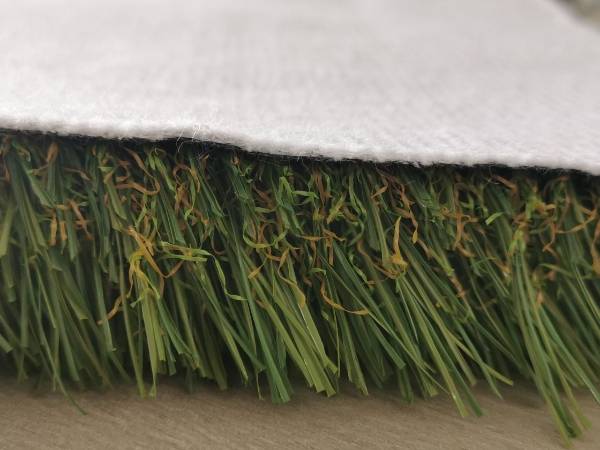
Recycled artificial grass overview
Recycled artificial grass has some environmental drawbacks that should be considered before using it. The production and disposal of synthetic materials used in artificial grass can have a negative impact on the environment. In addition, artificial grass does not provide the same ecosystem benefits as natural grass, such as air purification and water filtration.
As a manufacturer of artificial grass, we are committed to producing high-quality products that are both environmentally friendly and sustainable. We understand the growing demand for environmentally conscious solutions in the landscaping industry and have taken steps to ensure that our artificial grass products meet these needs:
We design our artificial grass with recyclability in mind. Our products are made from high-quality synthetic materials that are durable and long-lasting, but also easily recycled at the end of their life. We use a closed-loop recycling process that allows us to reclaim and repurpose the materials used in our artificial grass products, reducing waste and minimizing our environmental impact.
Our artificial grass products are also designed to be environmentally sustainable. We use eco-friendly materials whenever possible and strive to minimize our energy consumption and carbon footprint throughout the manufacturing process. This includes using energy-efficient machinery, sourcing materials from local suppliers to reduce transportation emissions, and minimizing waste and water usage in our production facilities.
Our artificial grass products are designed with both recyclability and sustainability in mind. We are committed to reducing waste and minimizing our environmental impact throughout the entire lifecycle of our products, from manufacturing to installation and beyond. With our eco-friendly and sustainable artificial grass solutions, we hope to contribute to a greener and more environmentally conscious future.
The chemicals used in artificial grass are harmless. Its main raw materials are PP (polypropylene) and PE (polyethylene), which is also a kind of plastic. These raw materials have undergone strict quality testing, non-toxic and non-hazardous, and many testing standards have reached international standards. Imagine that we can use plastic bowls to eat some snacks and desserts and so on, so walking on it will have no effect on the human body. Artificial grass can also prevent bacteria from multiplying, so bacteria on artificial grass are still relatively small. It does not need to spray pesticides for maintenance, eliminating the harm caused by pesticide residues. It also prevents direct contact between people and the ground, and protects the soil from damage.

Recycled artificial grass overview

Recycled artificial grass backing structure

Recycled artificial grass detail
LRgrass's new fully recycled artificial grass is of interest to lots of our clients. If any interest, please feel free to contact us